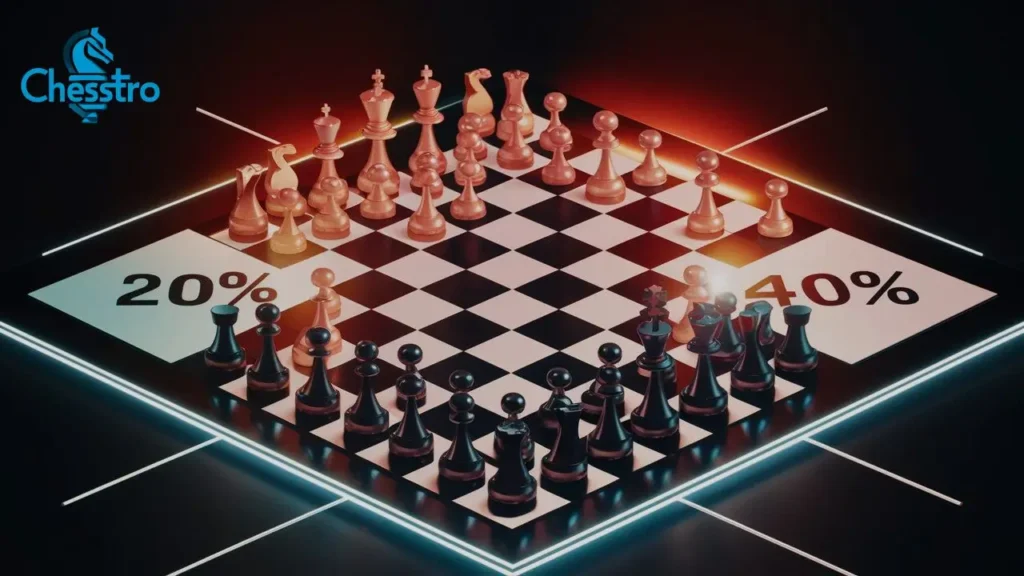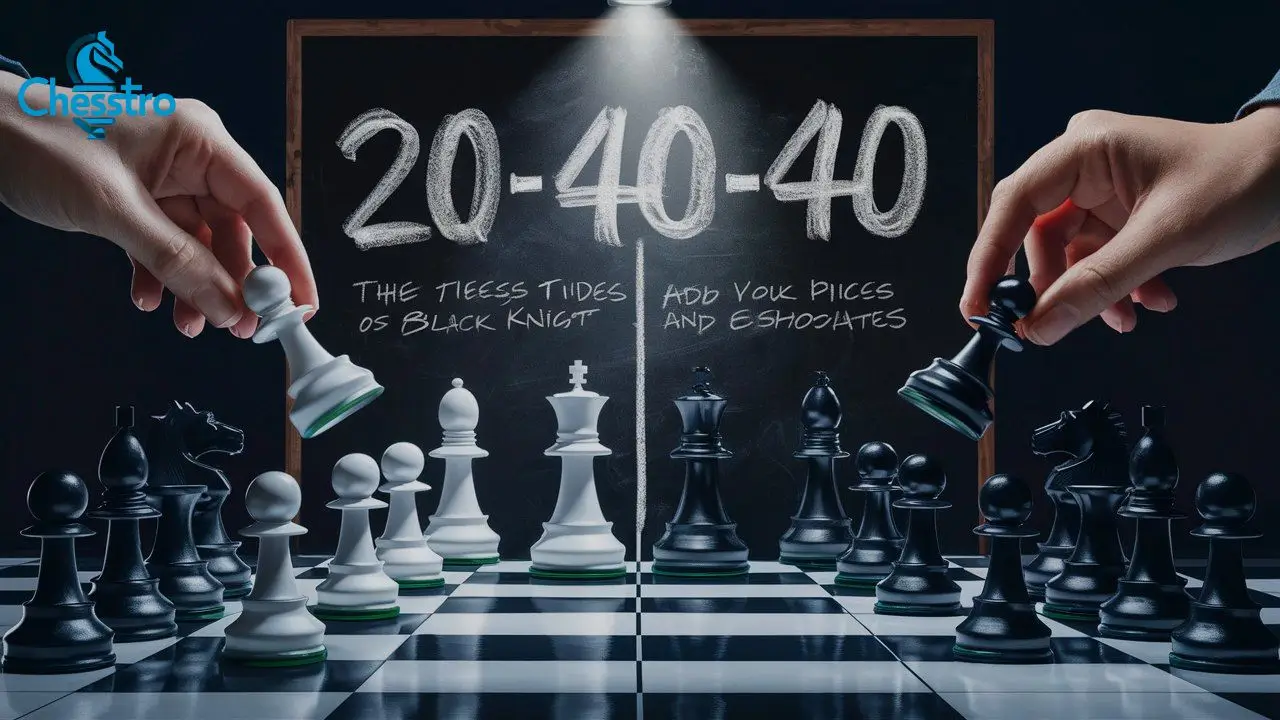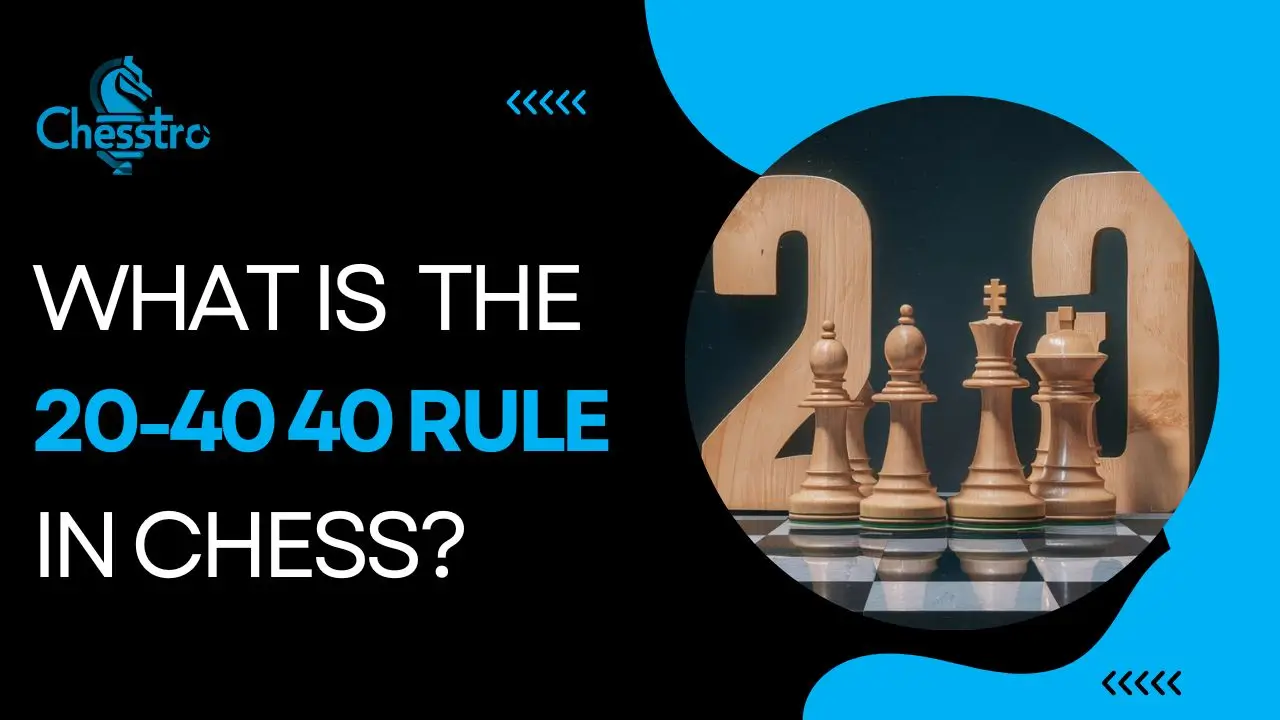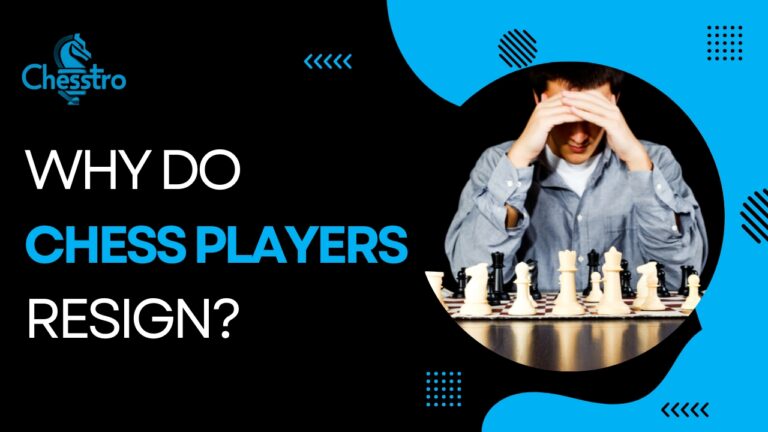What is the 20-40-40 rule in Chess? Strategic Time Allocation 2024
What is the 20-40-40 rule in chess? The 20 40 40 rule in chess, a simple yet powerful strategy, often gets overlooked. This rule is the secret key to a world of strategic dominance on the chessboard. It’s a blueprint for allocating your time and resources, turning beginners into formidable players.
For your Information!
Grandmaster Dmitri Komarov is often associated with the 20-40-40 rule, highlighting its importance in developing a comprehensive understanding of the game.
After understanding this rule, you’ll view the chessboard with a new perspective, and your moves will become more intentional and impactful.
So, let’s journey into the depths of the 20 40 40 rule, exploring its nuances to improve your chess tactics, strategy, and endgame. Chess is not simply a game; it is a competition that requires intelligence and strategic thinking.
You can also learn more about Why is Blitz chess so popular?
| Aspect | Description |
|---|---|
| Overview | The 20-40-40 rule divides a chess game into three phases: opening (20%), middle game (40%), and endgame (40%). |
| Opening Phase (20%) | Use 20% of your time to set up a strong position, develop pieces, and control the center of the board. |
| Middle Game (40%) | Spend 40% of your time planning strategic moves, coordinating pieces, and finding opportunities to attack or defend. |
| Endgame (40%) | Reserve the remaining 40% of your time for precise execution, strategic positioning, and converting advantages into wins. |
| Influence on Opening | Allocate your initial moves to place pieces well and control the center, setting up a solid foundation for the rest of the game. |
| Decision-Making | This rule guides when to act decisively (opening), plan carefully (middle game), and execute precisely (endgame), helping make better decisions throughout. |
| Strategic Importance | Following this rule helps manage time effectively, strengthen positions, and improve chances of success by optimizing decision-making at each game stage. |
Why Only 20% Of The Time For The Opening Phase?
The opening phase of any task or project is crucial, as it sets the foundation for everything that follows.
However, allocating only 20% of the time to this phase is a strategic decision that can lead to successful outcomes. The limited timeframe can be attributed to several factors.
Firstly, excessive time spent on planning and strategizing without actually executing can lead to a loss of momentum. By limiting the opening phase to 20%, a sense of urgency and focus is created that encourages swift decision-making and action.

You can also learn more about Can You Use Two Hands in Chess?
Spending a lot of time in the later stages allows for improvements and changes to the initial plan based on new feedback and surprises.
This flexibility is key for meeting changing needs, making necessary adjustments, and seizing new opportunities.
Ultimately, using only 20% of the time for the early phase strikes a balance between establishing a solid foundation and maintaining the flexibility needed for success.
How Does The 20-40-40 Rule Apply to A Chess Strategy?
The 20-40-40 rule is a concept applied in chess strategy that emphasizes the allocation of time in a game.
In chess, players generally have a limited amount of time to make their moves. The 20-40-40 rule is designed to assist in the decision-making process.
You can also learn more about Do Chess Books Help?
This rule recognizes the importance of each stage of the game and helps players focus their energy accordingly. During the opening, players aim to establish a solid position and develop their pieces efficiently.
In the middle of the game, players need to think harder and plan their moves carefully to get ahead of their opponents. As the game moves towards the end, players need to use their remaining time smartly to either maintain their lead or protect against their opponent’s moves.

The 20-40-40 rule helps chess players manage their time well during the game. It allows them to make the best decisions by considering where and how to use their time and effort.
You can also learn more about What Is A Genius Chess Personality?
How Does The 20-40-40 Rule Affect Opening Choices In Chess?
The 20-40-40 rule in chess is a strategy that suggests how to spend your moves at the start of the game. It says you should use 20% of your moves to get your pieces, like knights and bishops, out towards the middle of the board.
These pieces are better when they’re in the center because they can move around more freely and control important areas. Then, 40% of your moves should focus on driving your pawns in a way that helps you take control of the center part of the board and get ready for attacking later.
You can also learn more about Can A King Move Without A Check?
The other 40% of your moves should do things that make your opening strategy stronger or start an attack. Following this rule is really important for choosing how to start a game because it highlights how key it is to control the center of the board and to get your pieces out in good positions early on.

Moving your minor pieces (the knights and bishops) to active spots in the center is encouraged because it lets them have more options and influence over the game.
Pawns are also super important because they help make a strong setup and back up your pieces for when you’re ready to make more decisive moves.
By sticking to the 20-40-40 rule, players can make sure their pieces and pawns work well together, which helps set up a strong game as it goes on and boosts their chances of winning.
You can also learn more about Can A Queen Move Like A Knight?
How does the 20-40-40 rule influence decision-making in chess?
The 20-40-40 rule is really important in chess because it helps players make good decisions and plan their moves. This rule breaks down the game into three main parts: the opening, the middle game, and the end game.
Each part gets a certain amount of attention—about 20% for the opening, 40% for the middle game, and 40% for the end game.
You can also learn more about How Do Grandmasters Study Chess?
There are lots of different factors to think about, like how your pawns are set up, how well your pieces work together, and finding chances to attack.
In the endgame, careful planning and smart moves are key to turning any advantage you have into a win.
The 20-40-40 rule helps players balance their time and energy during a game. It means starting strong, thinking hard in the middle, and being careful at the end.
This makes players ready from the start, smarter in their decisions, and accurate in finishing. In short, it’s about preparing well, thinking carefully, and making good moves all through the game.
You can also learn more about How Do Chess Hustlers Work?
FAQS: : What is the 20-40-40 rule in chess?
Final Thoughts: What is the 20-40-40 rule in chess?
In conclusion, the 20-40-40 rule in chess is a time allocation strategy that can help players make better decisions throughout the game. By dedicating 20% of their time to the opening phase, players can establish a strong position and develop their pieces efficiently.
The middle game requires more tactical planning and calculation, while the endgame demands careful consolidation and defense. By following the 20-40-40 rule, players can allocate their time and resources strategically, which can increase their chances of success on the chessboard.







